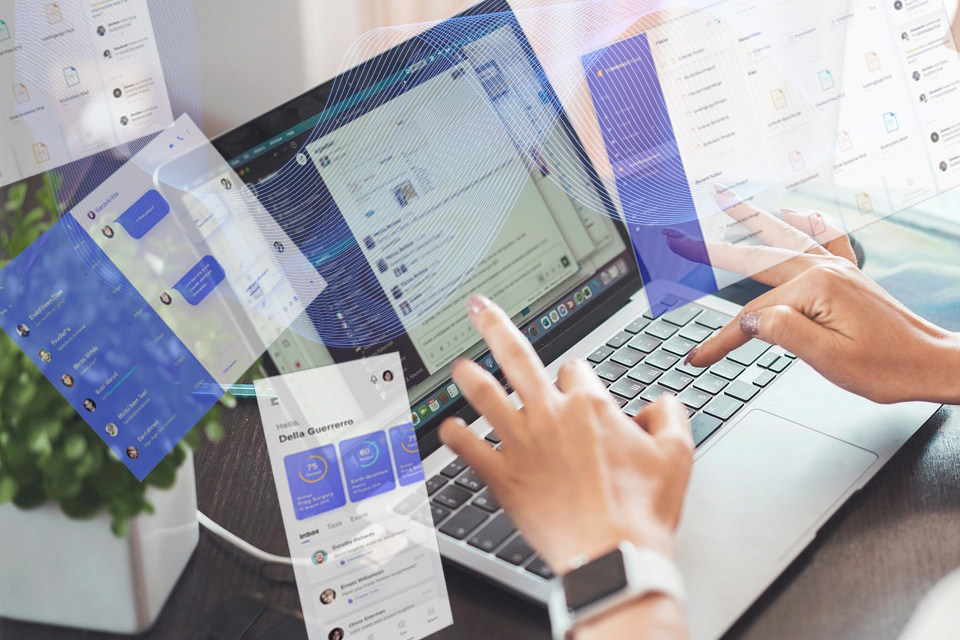Introduction
From group chats to group projects, platforms and software designed to bring your office together have proliferated in the past decade or two.
Maybe you use Slack or Microsoft Teams to talk with multiple people at once. Maybe your office uses Monday or Basecamp to organize processes and assign tasks.
In today’s digital age, collaborative tools like Google Docs and Google Drawings have become indispensable for teamwork and productivity. These tools allow seamless sharing and editing of documents, making it easier for teams to work together whether they are in the same office or spread across the globe. With the convenience of these tools, however, comes the risk of phishing and other scams.
Even in a seemingly secure office environment, it’s crucial to remain vigilant and adopt best practices to protect yourself and your organization from cyber threats!
How Collaborative Tools Could Endanger Your Data
Let’s start with the most common threat to your data, phishing. Phishing attacks impersonate legitimate entities to trick individuals into providing sensitive information, such as passwords, credit card numbers, or other personal data. These attacks often come in the form of emails, messages, or links that appear to be from trusted sources.
In the context of collaborative tools, phishing can manifest as fake document sharing requests, malicious links embedded in shared documents, or fraudulent invitations to collaborate.
If you get an invitation to collaborate on a project, whether you’re expecting it or not, what are some red flags suggesting that the sender is not all that they seem?
Best Practices for Cyber-Safety
Cybercriminals are becoming increasingly sophisticated in their methods. They can create convincing fake invitations and collaborative documents that closely resemble legitimate ones. This makes it easy for even the most cautious individuals to fall victim to scams.
Always double-check links and attachments before clicking on them! These “invites” often contain malicious links that look legitimate. Hover over links to see the actual URL and ensure it matches the expected destination.
Be cautious of unexpected requests for sensitive information, even if they appear to come from a trusted colleague. Verify requests through a different communication channel, such as a phone call or a direct message. It takes one minute to walk across the office and ask about a direct message—and a hacker could infiltrate the organization just as quickly, if YOU don’t take the proper precautions.
While we often think of cyber threats as coming from external sources, internal threats can also pose significant risks. Disgruntled employees or those with malicious intent can exploit collaborative tools to distribute harmful links or steal sensitive information.
Even in a secure office environment, human error can lead to security breaches. An employee might accidentally click on a malicious link or share sensitive information with the wrong person. Vigilance and taking a step back to assess all invites can help mitigate your risk of falling victim!
Finally, it’s important to make sure that we create secure collaborative documents and use best practices when inviting others to join our projects. Go to your document’s or meeting space settings to ensure that only people with the invite link can join you. That immediately prevents outside parties from infiltrating. You may also consider requiring a separate passcode to enter, something that only authorized parties know, to prevent unauthorized access even if the link gets leaked.
Conclusion
How can you protect yourself from any threats that might emerge from collaborative software?
- Use MFA for your accounts to add an extra layer of security. This ensures that even if your password is compromised, an attacker would still need a second form of verification to access your account.
- Ensure your software and antivirus programs are up to date to protect against the latest threats. New versions and updates can include security patches for zero-day vulnerabilities.
- If you notice anything unusual, report it to your IT department immediately. Early reporting can help prevent potential breaches and minimize damage.
- If you notice anything unusual, report it to your IT department immediately. Early reporting can help prevent potential breaches and minimize damage.
While collaborative tools offer immense benefits for productivity and teamwork, they also present opportunities for cybercriminals.
By staying vigilant and adopting best practices, you can protect yourself and your organization from phishing and other scams. Remember, cybersecurity is a shared responsibility, and everyone plays a role in keeping the digital workspace safe.



